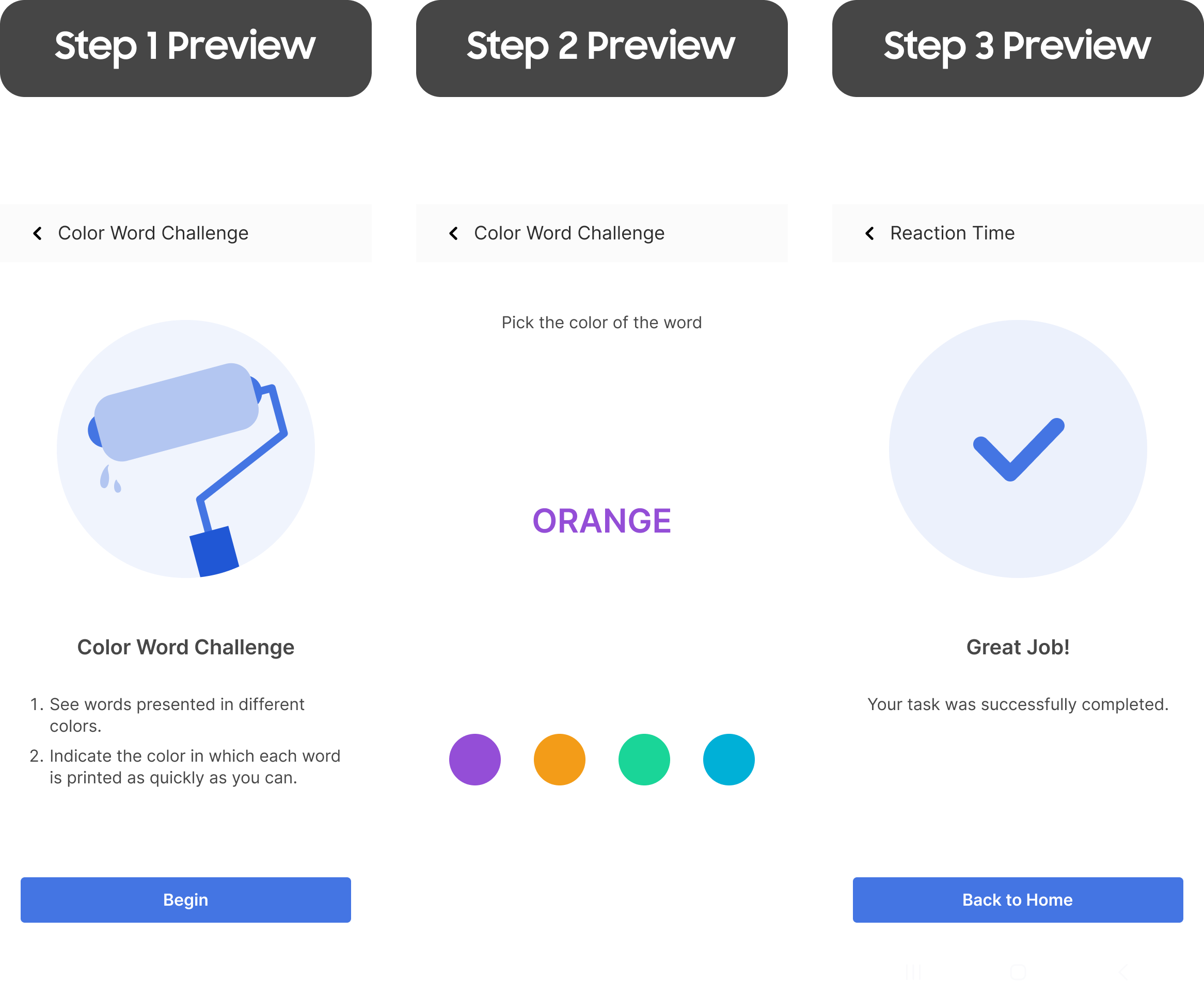Activities allow researchers to collect specific types of data from users. To create an activity, see Creating an Activity document on steps to create an activity. Three categories of activities come within our system: Motor, Audio, and Cognition.
Motor Activities
Motor activities are designed to assess and measure the physical function of the body, particularly movements and coordination. They can be helpful in tracking physical progress, diagnosing potential health issues, and planning rehabilitation strategies.
Tapping Speed
Tapping speed activities measure manual dexterity and hand-eye coordination. This involves activities where participants rapidly tap a surface with their fingers, and the speed of these taps is recorded over a certain period.
Portal View:
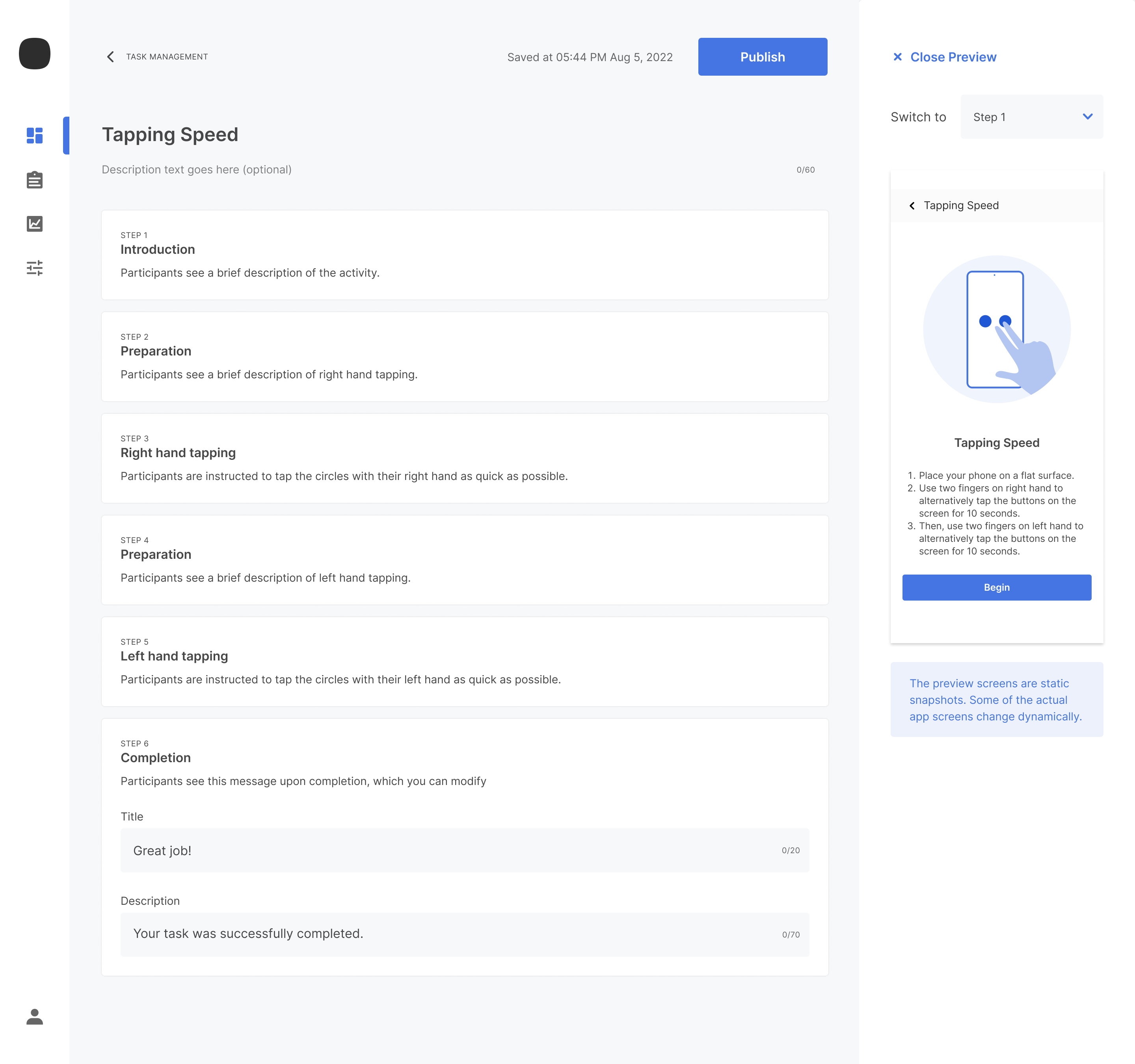
End-user View:
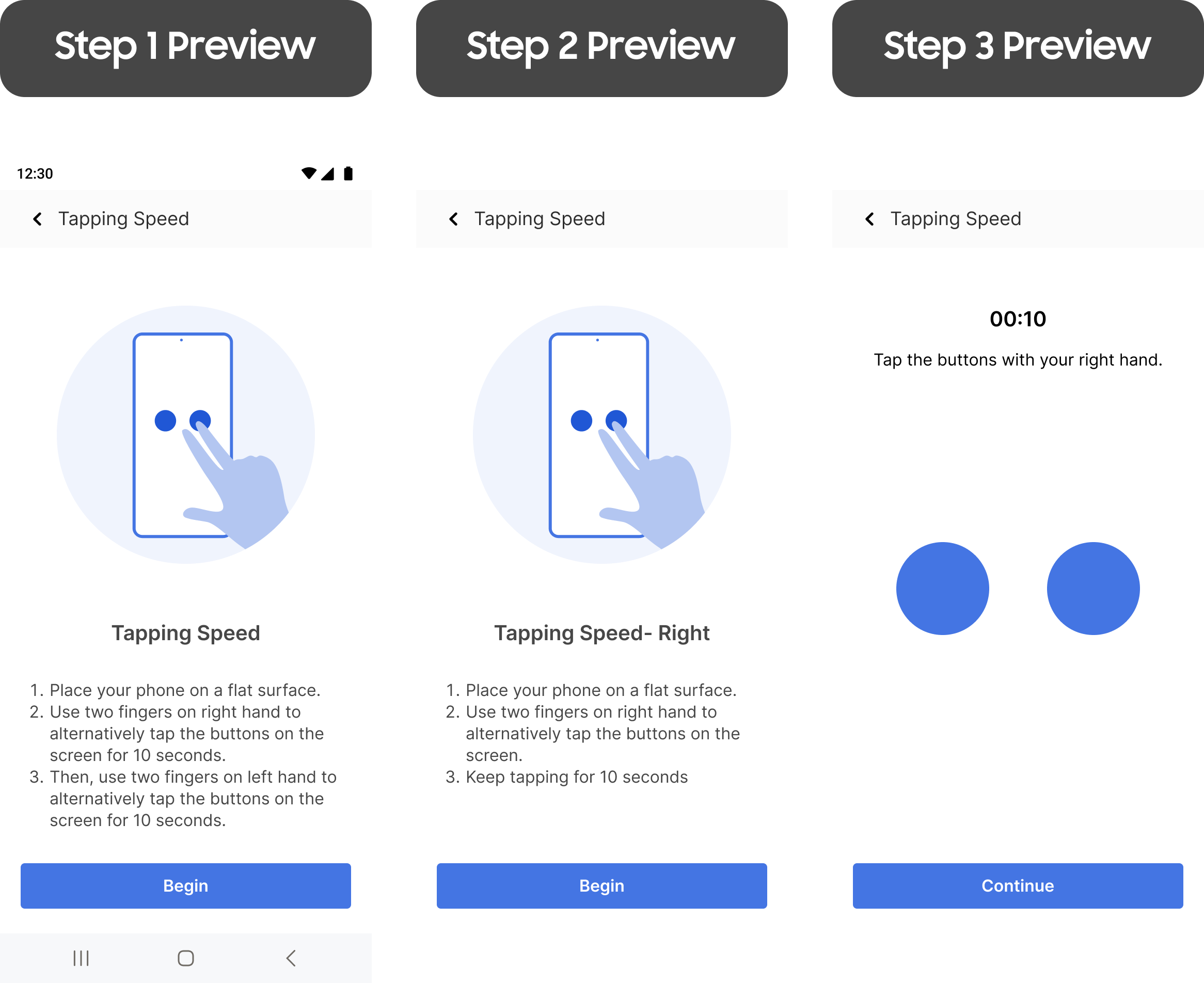
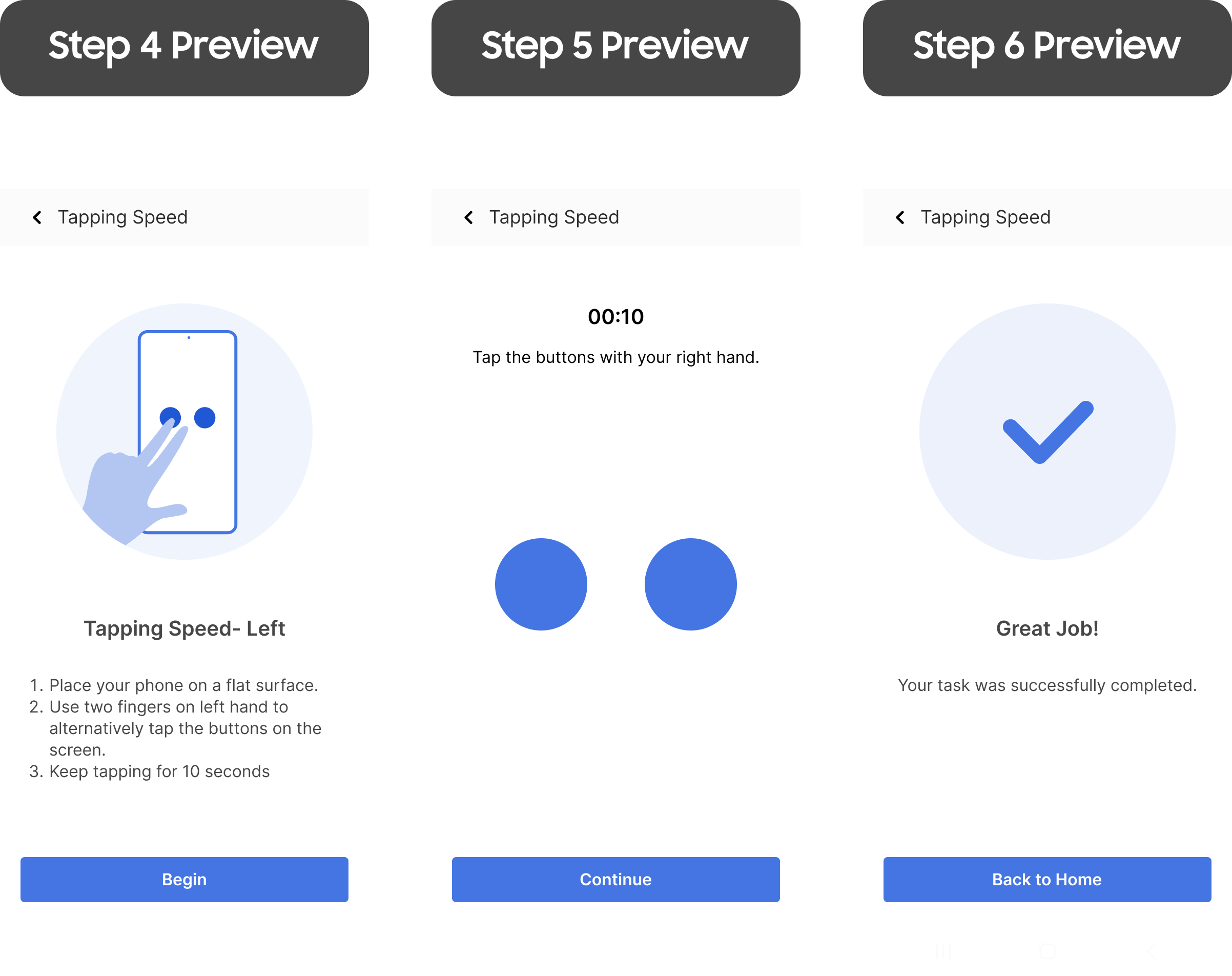
Gait & Balance
These activities involve walking and standing to evaluate balance, coordination, and risk of falls. Various tests could involve walking in a straight line, standing on one foot, or walking while performing a cognitive task.
Portal View:
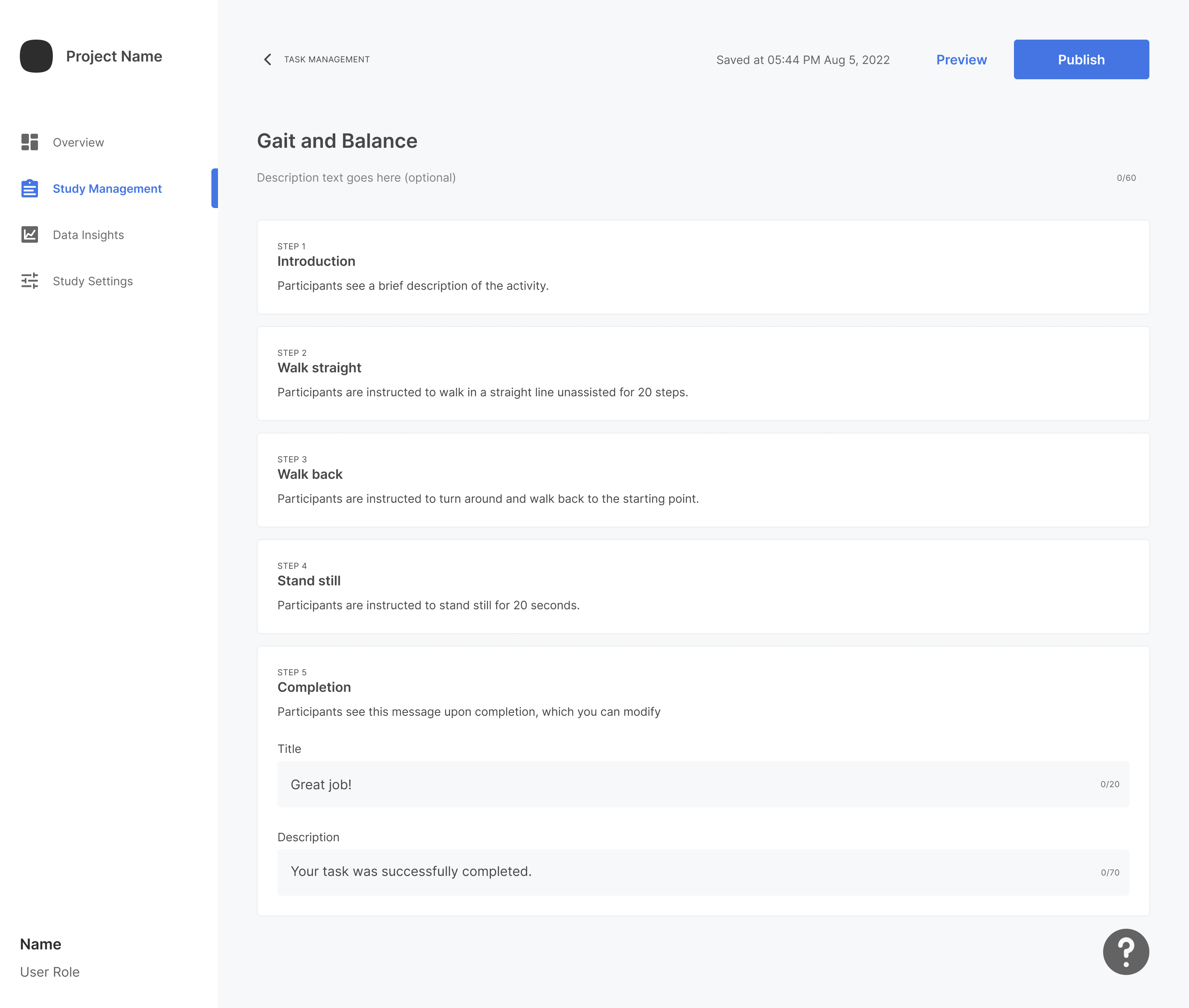
End-user View:
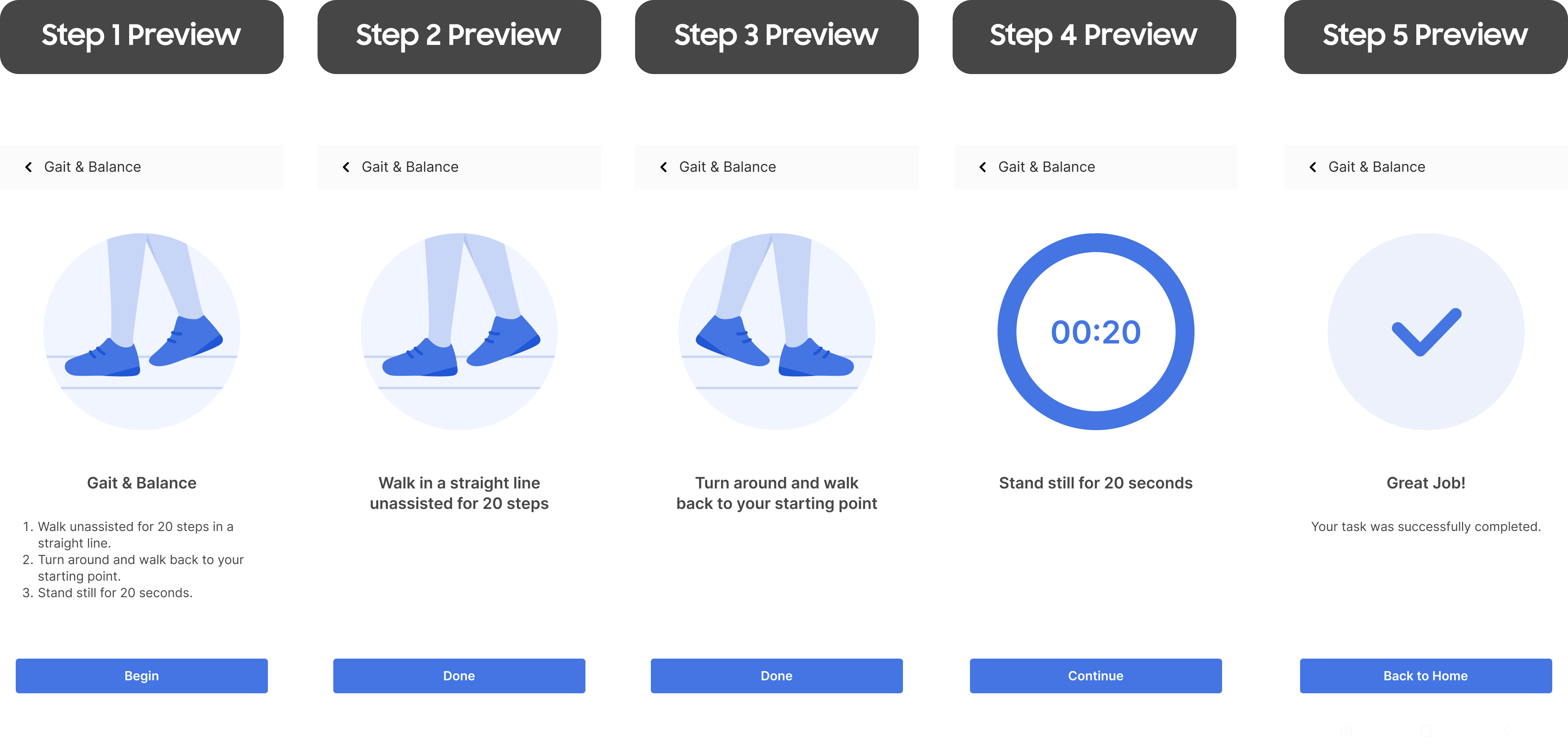
Range of Motion
Range of motion activities measures the extent of movement in a joint or series of joints. This involves participants moving their arms (or other body parts) through the maximum possible movement. These activities can be critical in evaluating joint health and tracking rehabilitation progress.
Portal View:
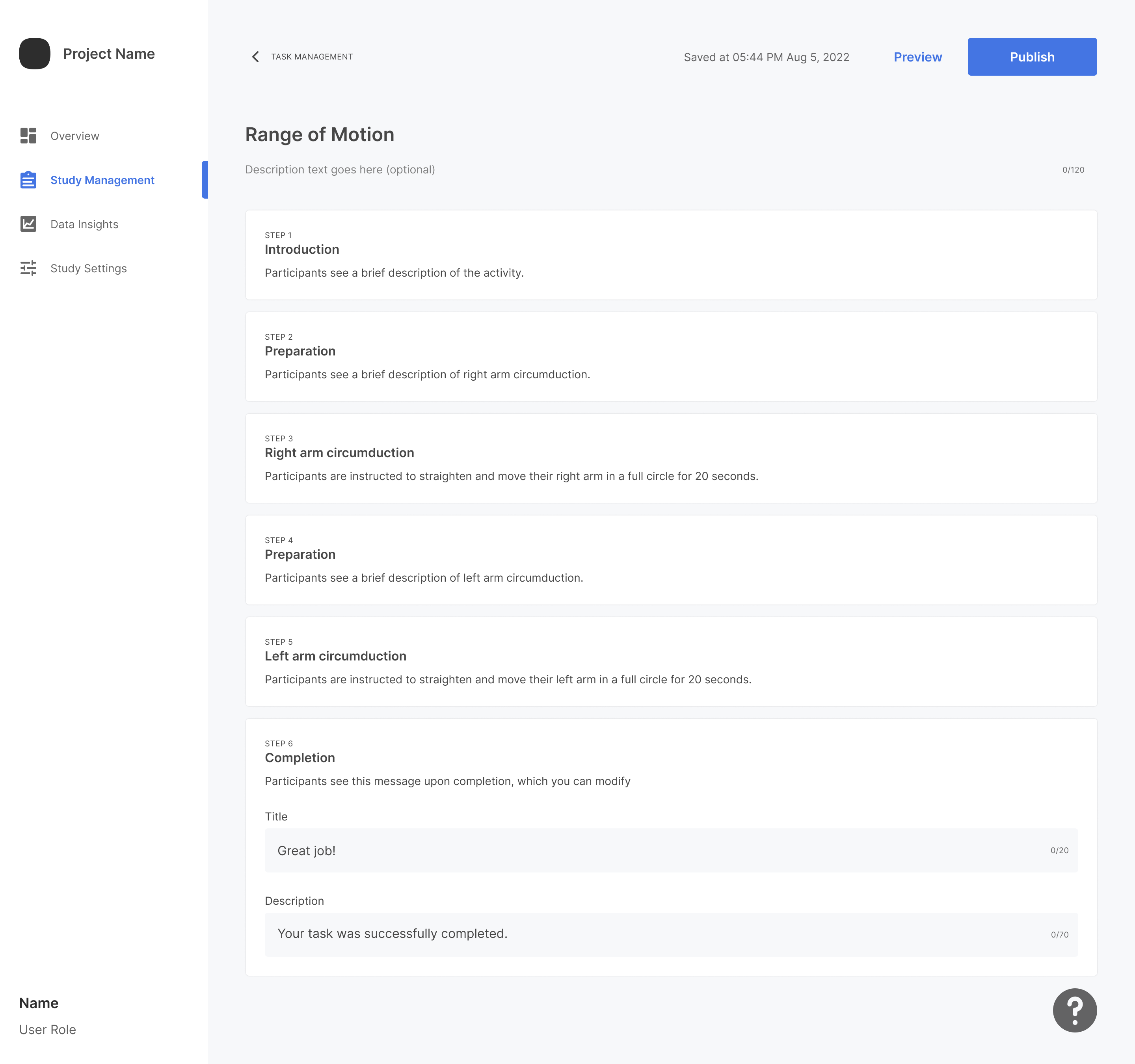
End-user View:
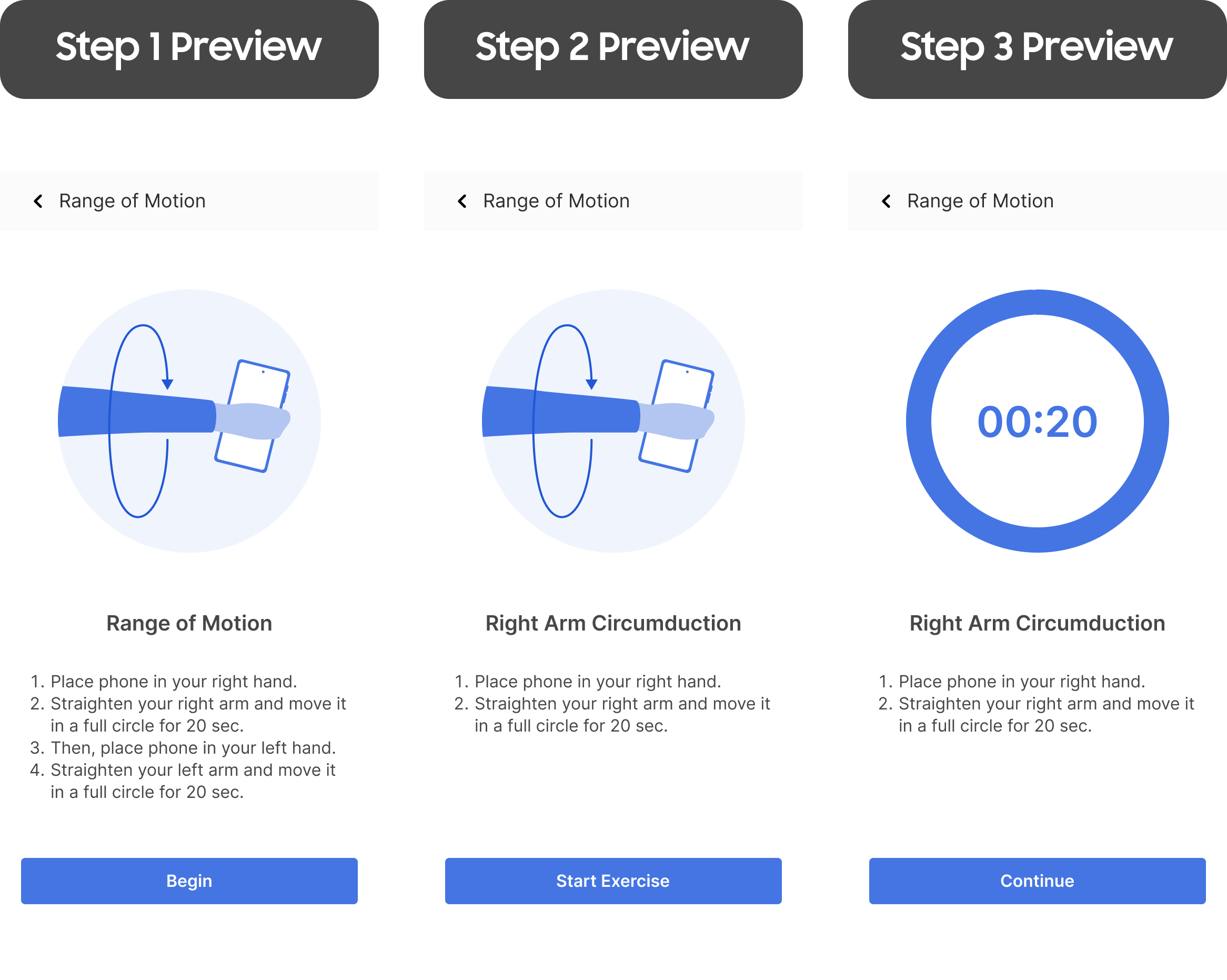
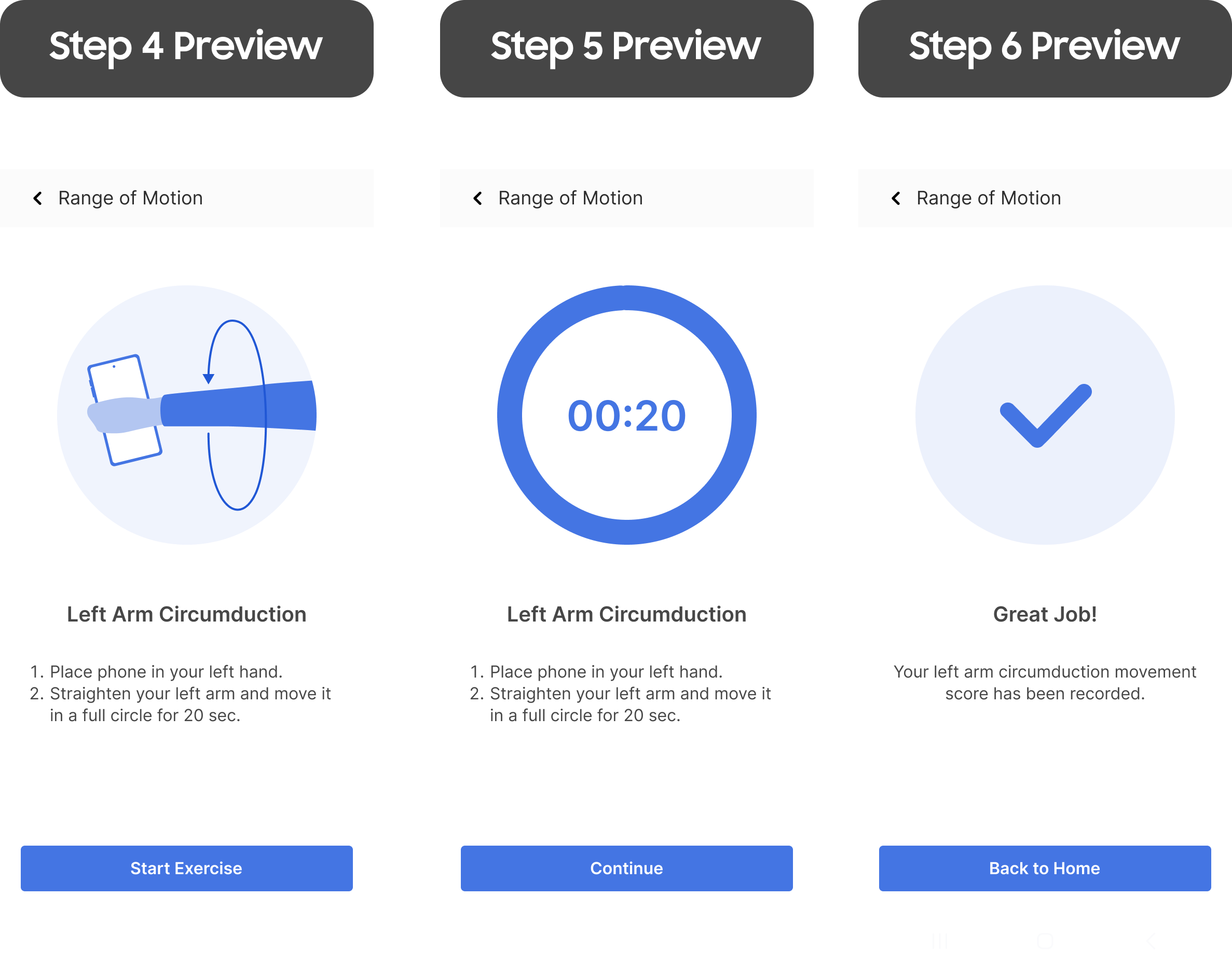
Audio Activities
Audio activities are focused on measuring and evaluating vocal and respiratory function. They can be beneficial in diagnosing vocal disorders, monitoring lung health, and aiding speech therapy.
Sustained Phonation
Sustained phonation activities involve holding a certain sound or note for as long as possible. This measures vocal strength and stamina and can provide useful information about vocal cords and breath control.
Portal View:
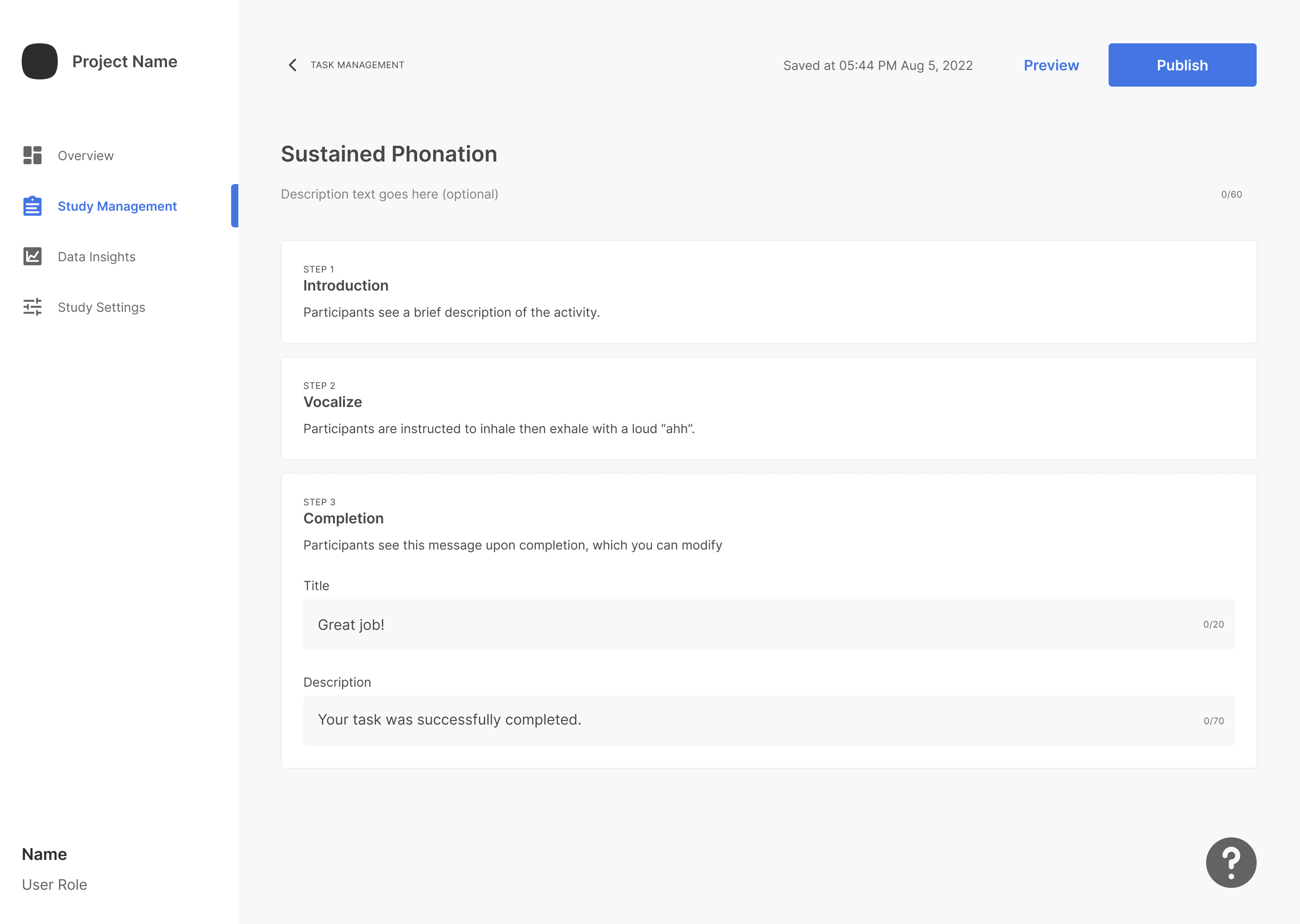
End-user View:
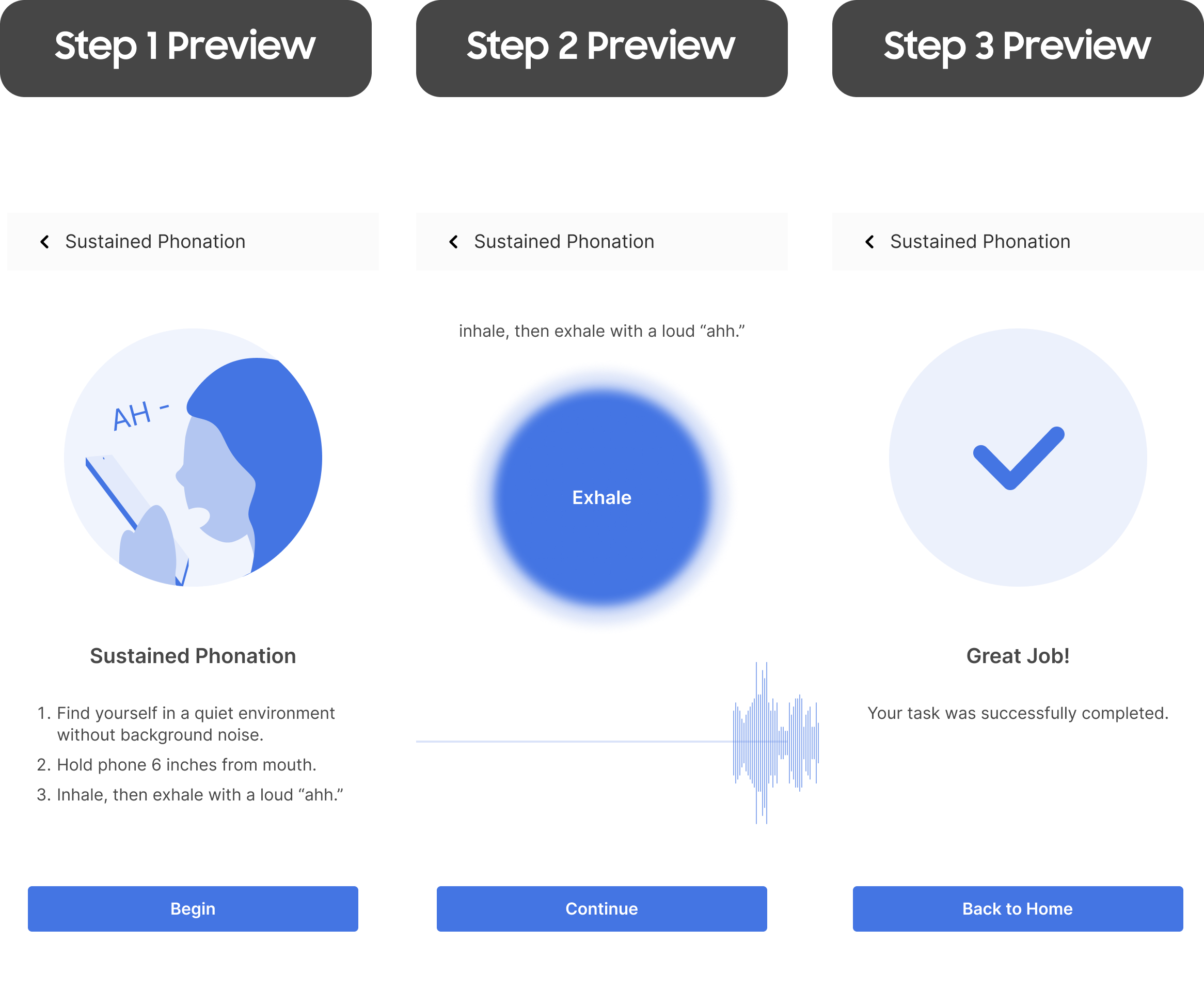
Mobile Spirometry
Mobile spirometry activities measure the forcefulness of exhales, providing valuable insights into lung function and capacity. This can help identify breathing-related issues, monitor progress in respiratory therapy, and gauge overall lung health.
Portal View:
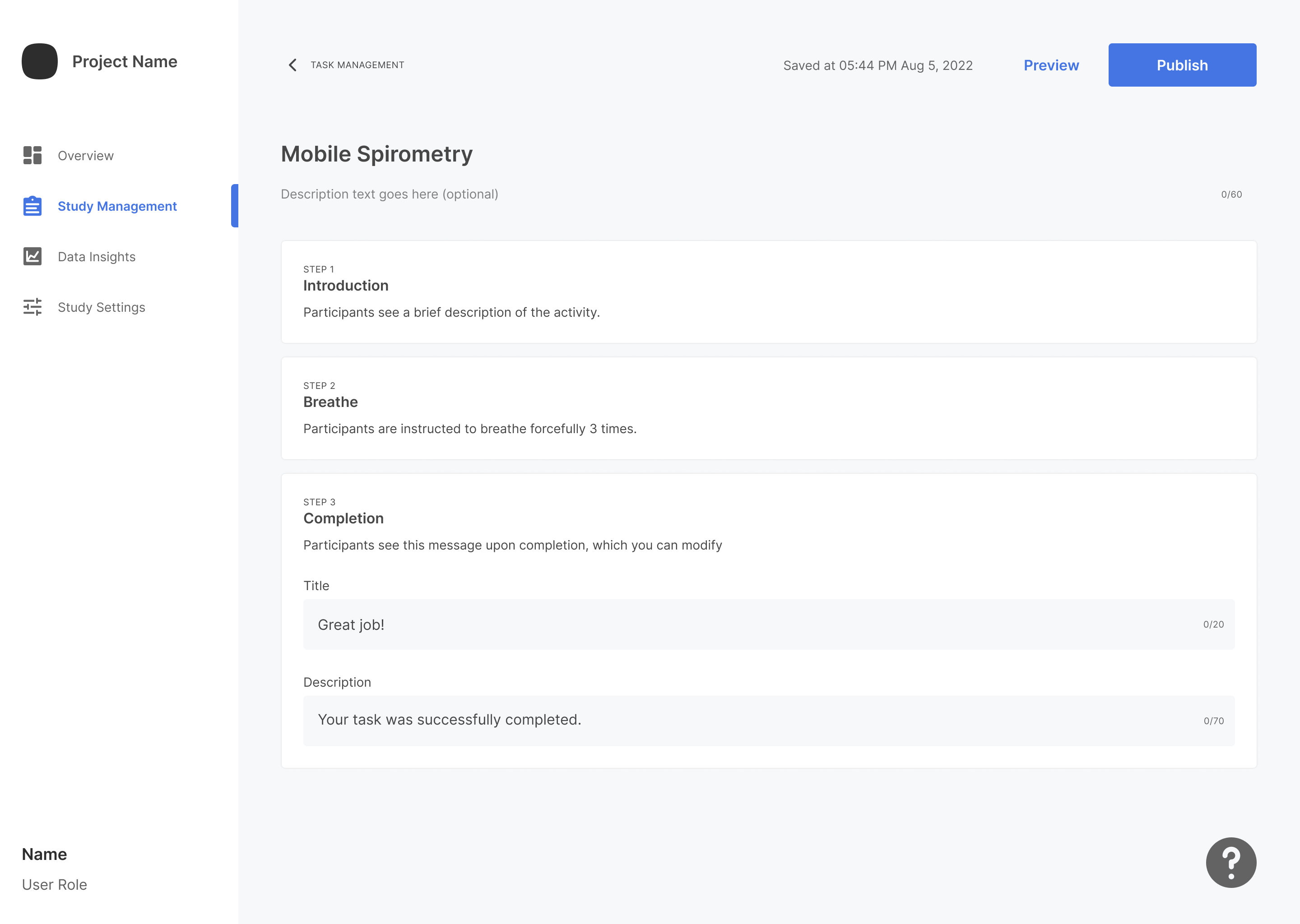
End-user View:
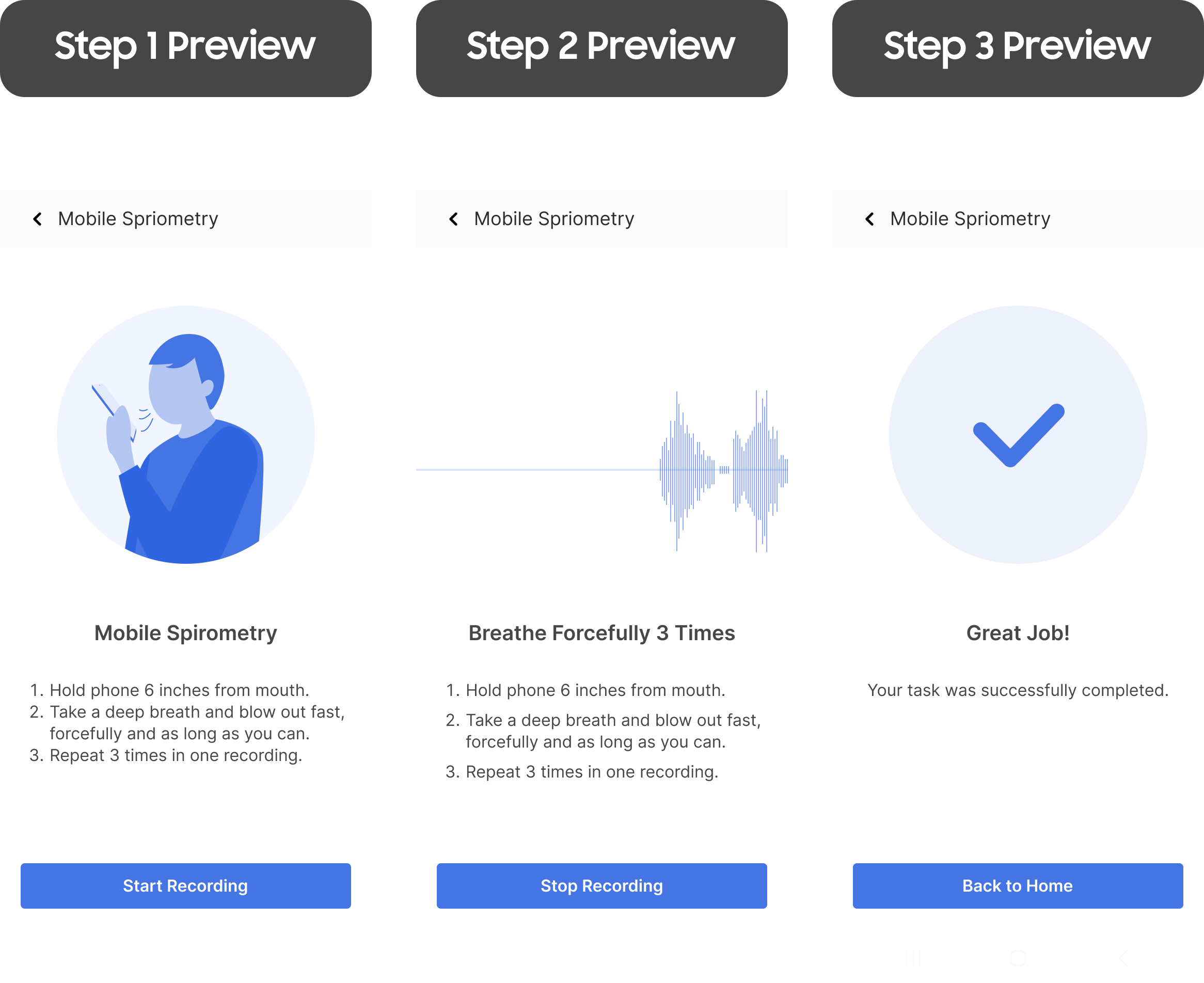
Speech Recognition
Speech recognition activities measure voice strength and clarity. This may involve repeating phrases, reading sentences, or engaging in conversation while software measures speech clarity, volume, and intelligibility.
Portal View:
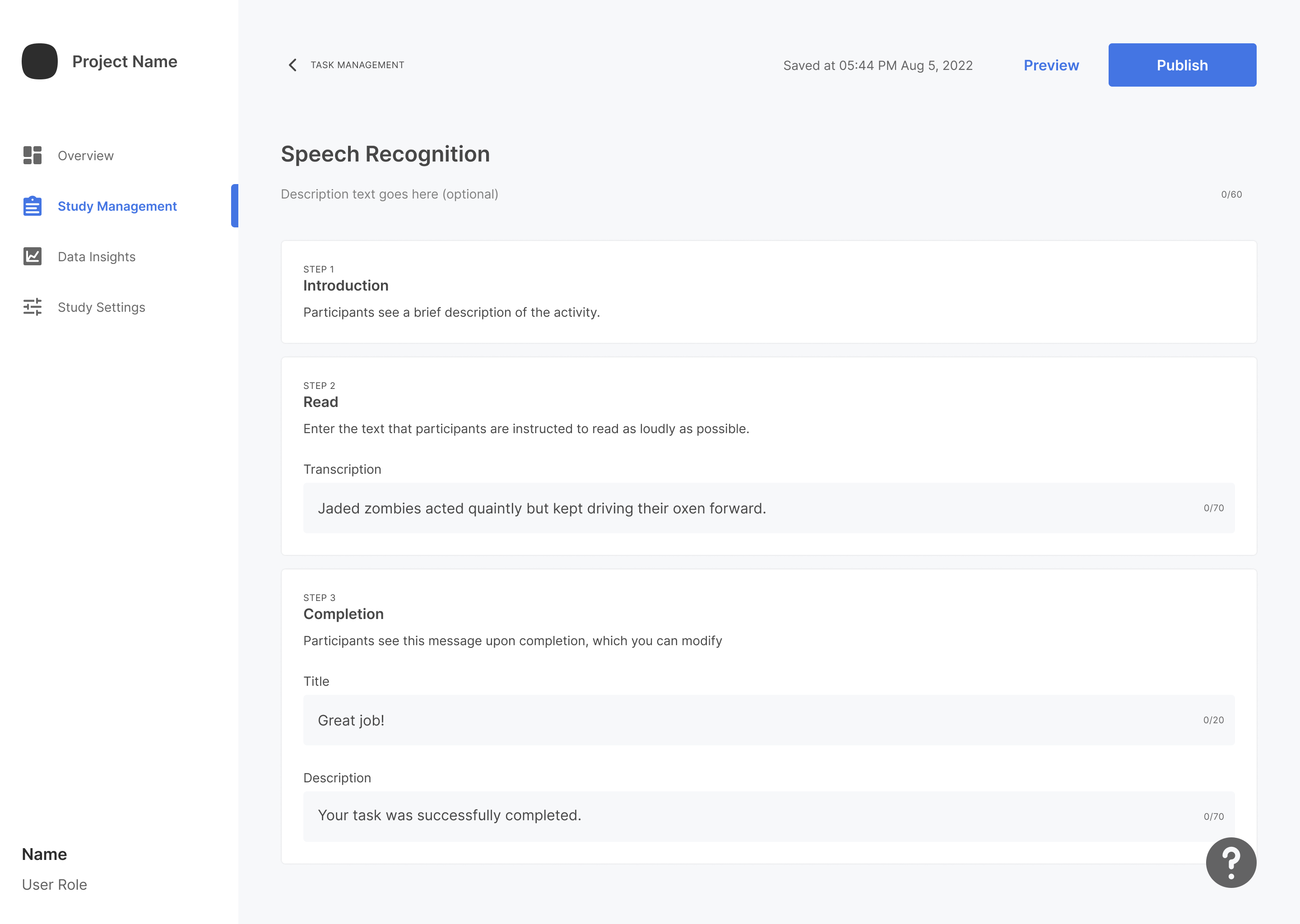
End-user View:
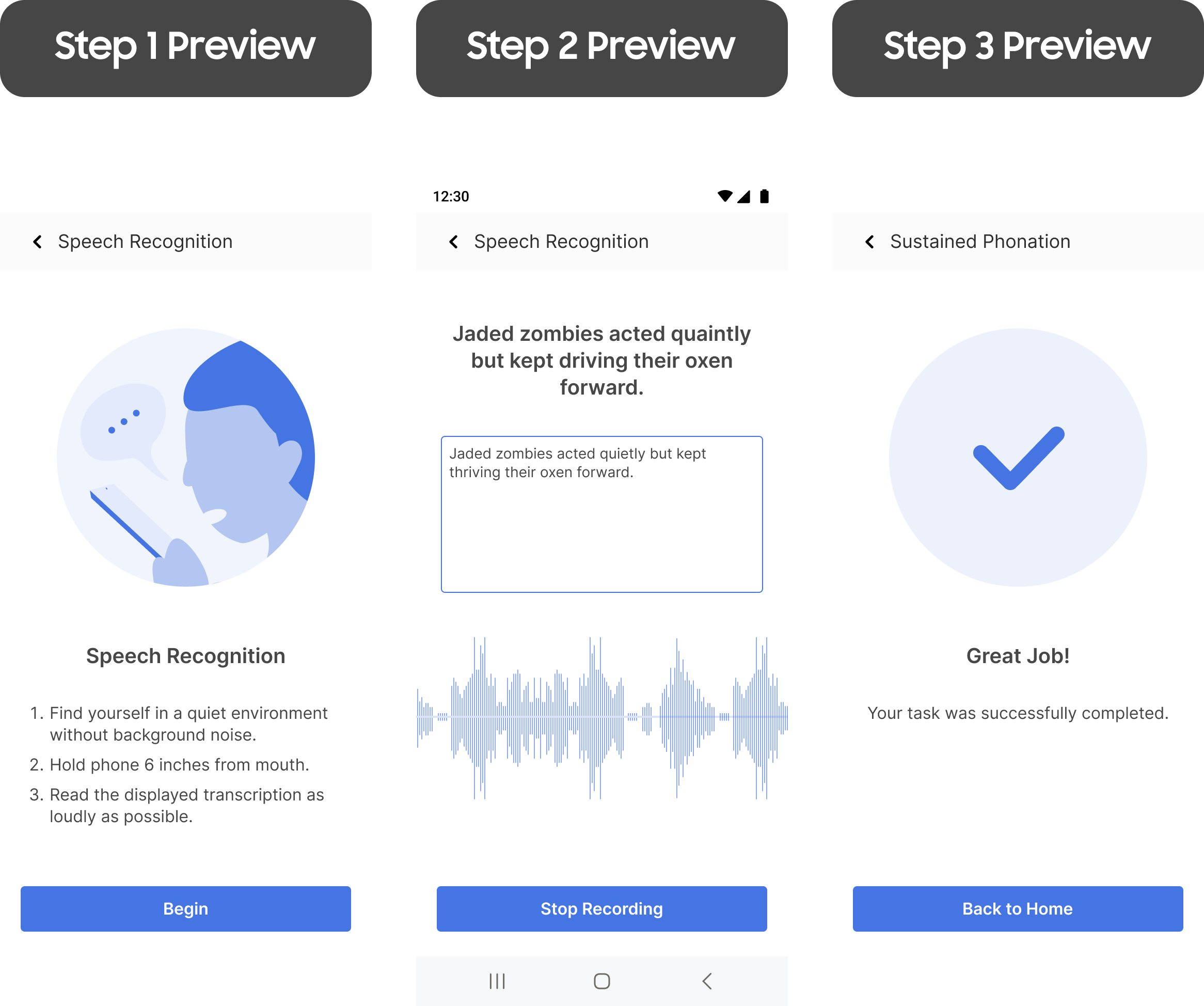
Guided Breathing
Guided breathing activities involve following audio instructions to take deep, controlled breaths. These activities can measure lung capacity, help with relaxation, and be part of respiratory therapy.
Portal View:
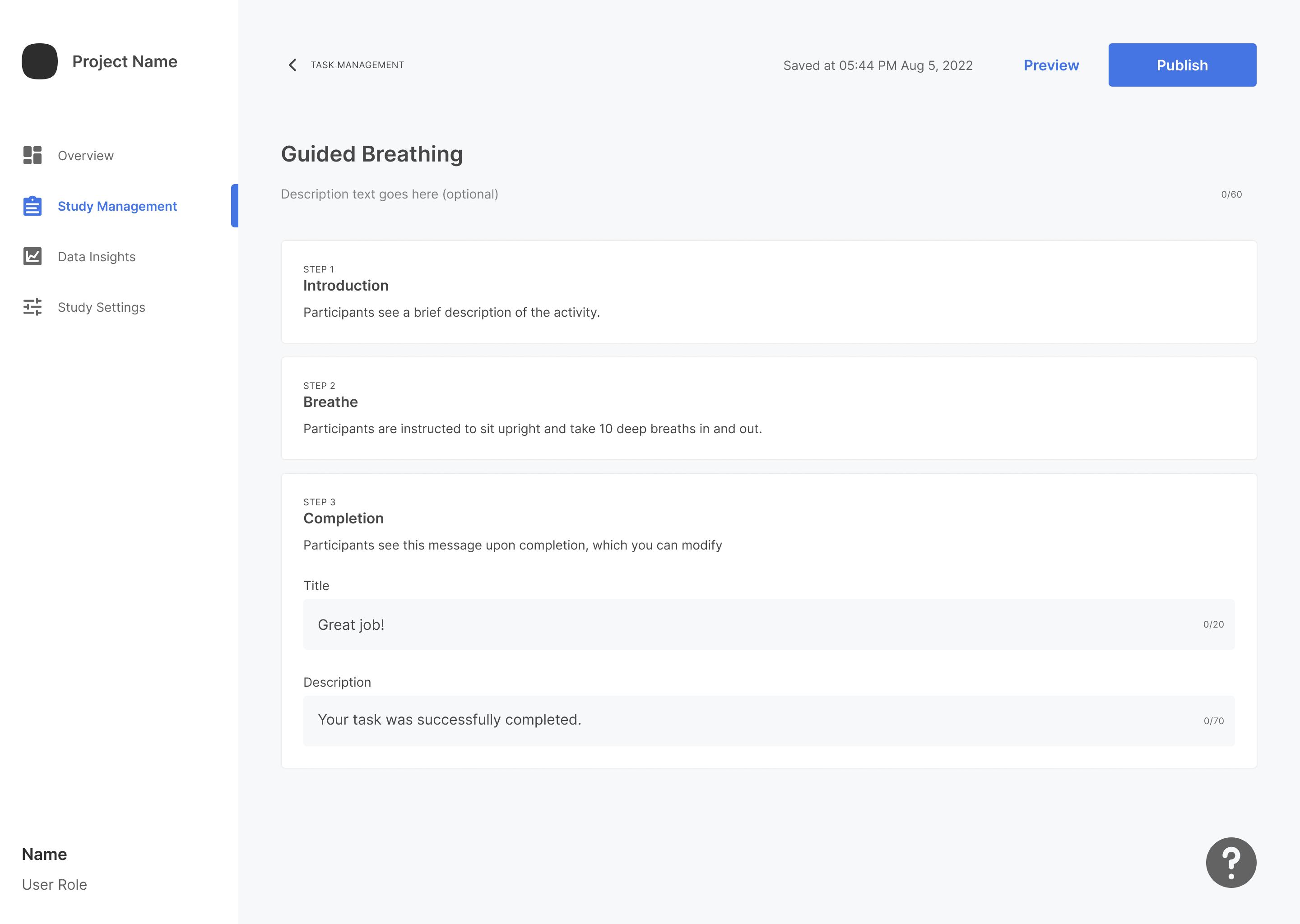
End-user View:
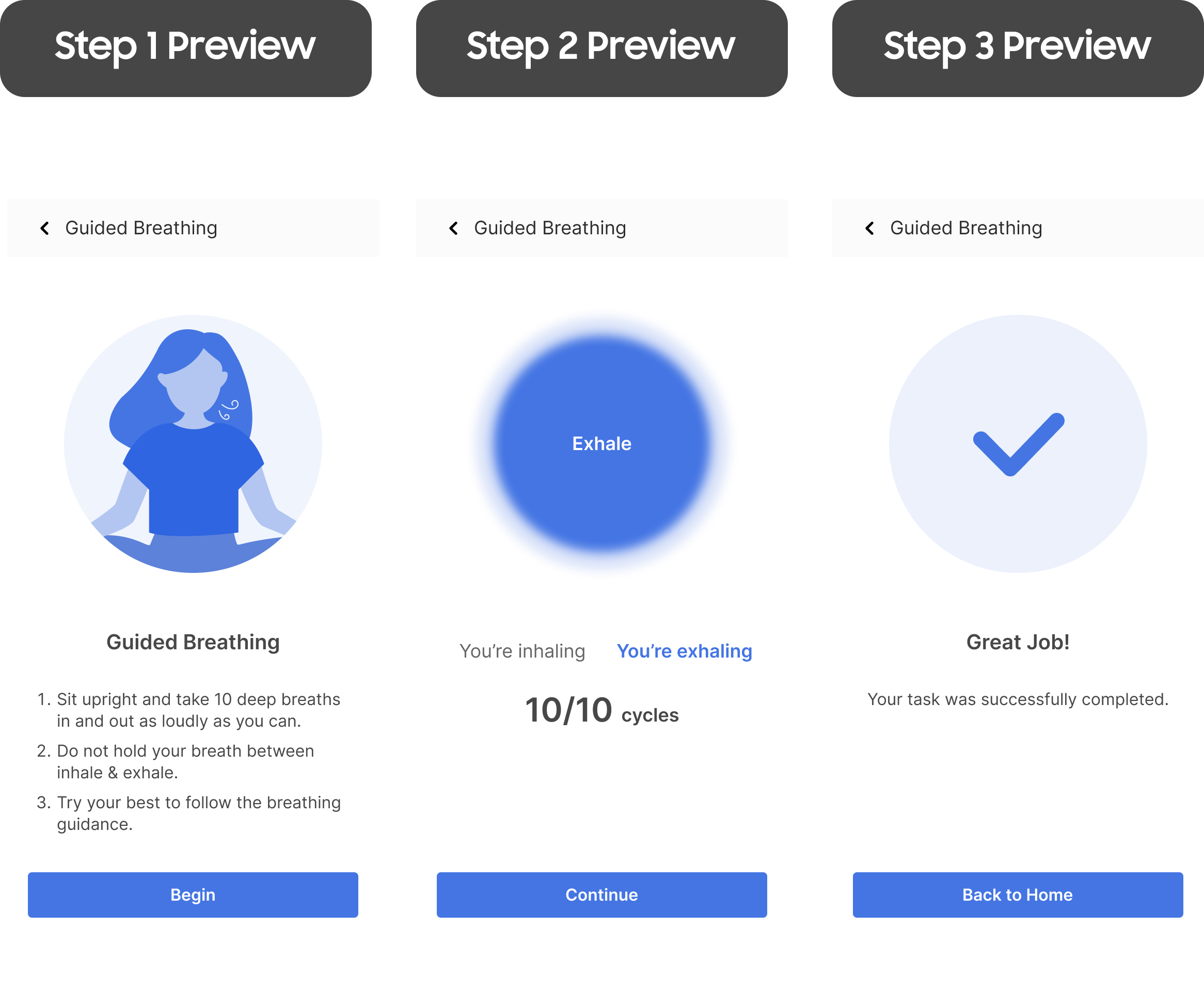
Cognition Activities
Cognition activities are designed to assess and measure mental function and cognitive skills. These can help track cognitive health, aid in the early detection of cognitive disorders, and assist in cognitive rehabilitation.
Reaction Time
Reaction time activities measure the time taken to respond to a stimulus. This can provide insights into cognitive speed, mental alertness, and coordination.
Portal View:
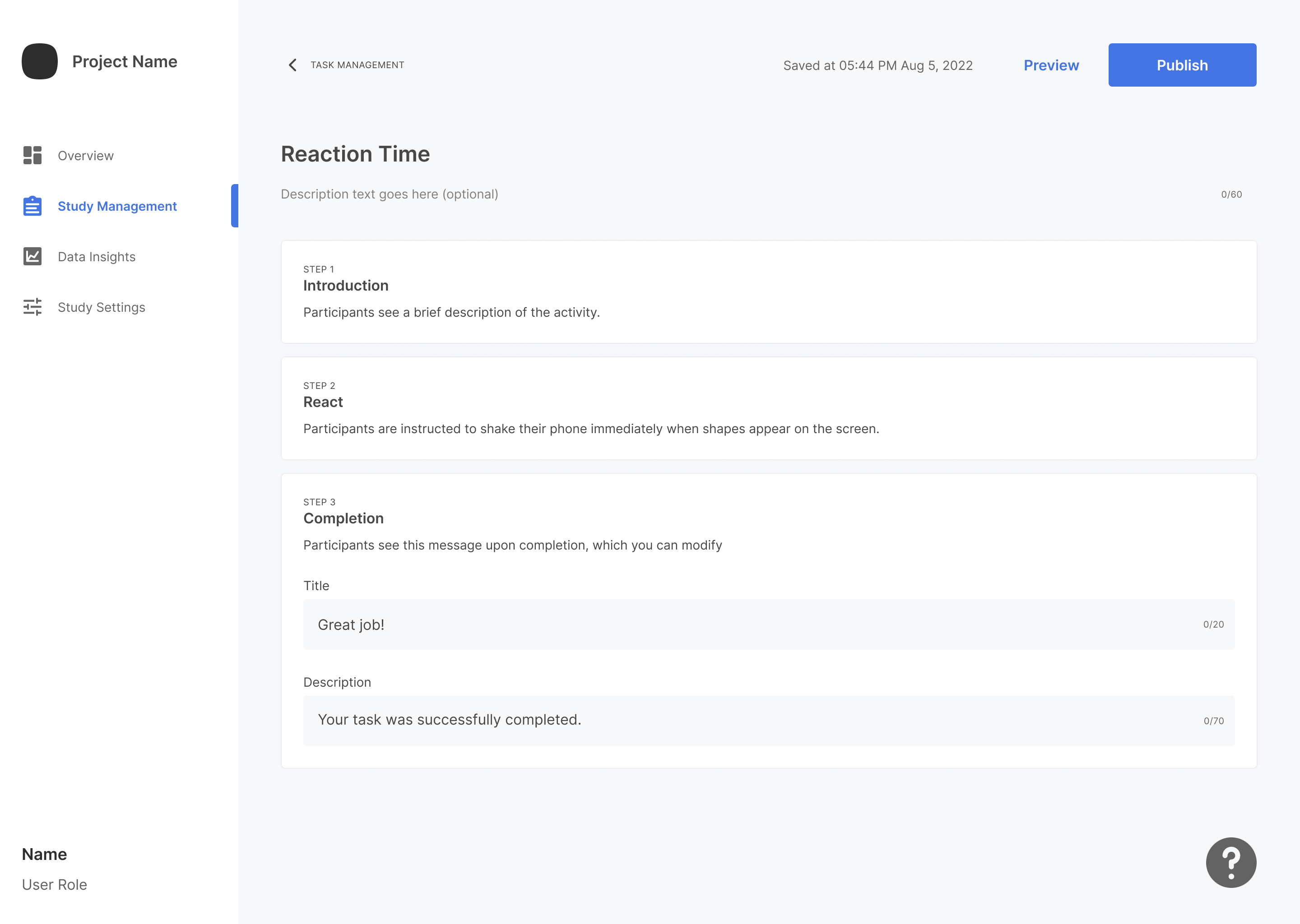
End-user View:
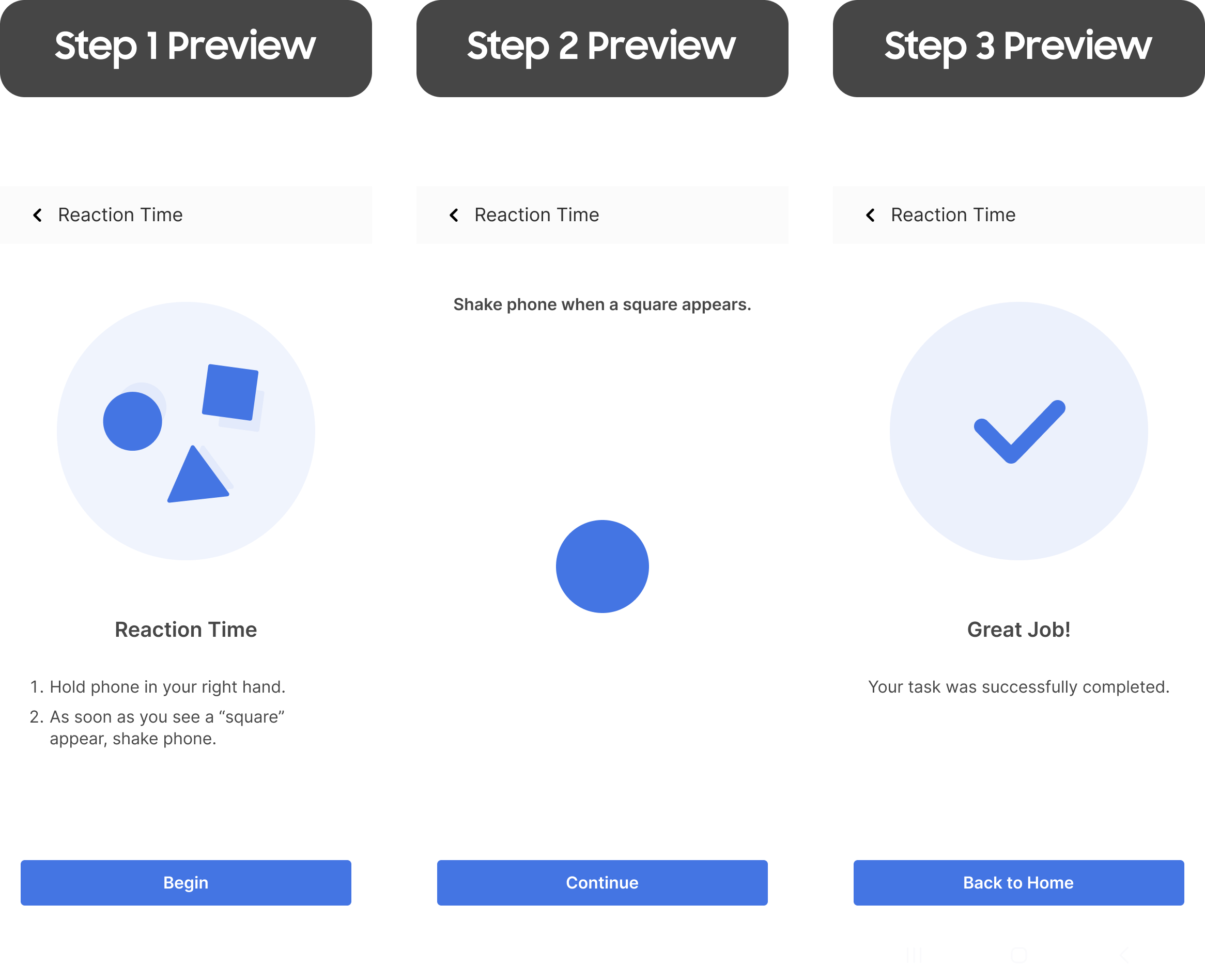
Color Word Challenge (Stroop Test)
The Color-Word Challenge involves identifying the color of a word while ignoring the word itself, which could be the name of a different color. This measures selective attention, cognitive flexibility, and processing speed. It can help identify cognitive impairment or progress in cognitive therapy.
Portal View:
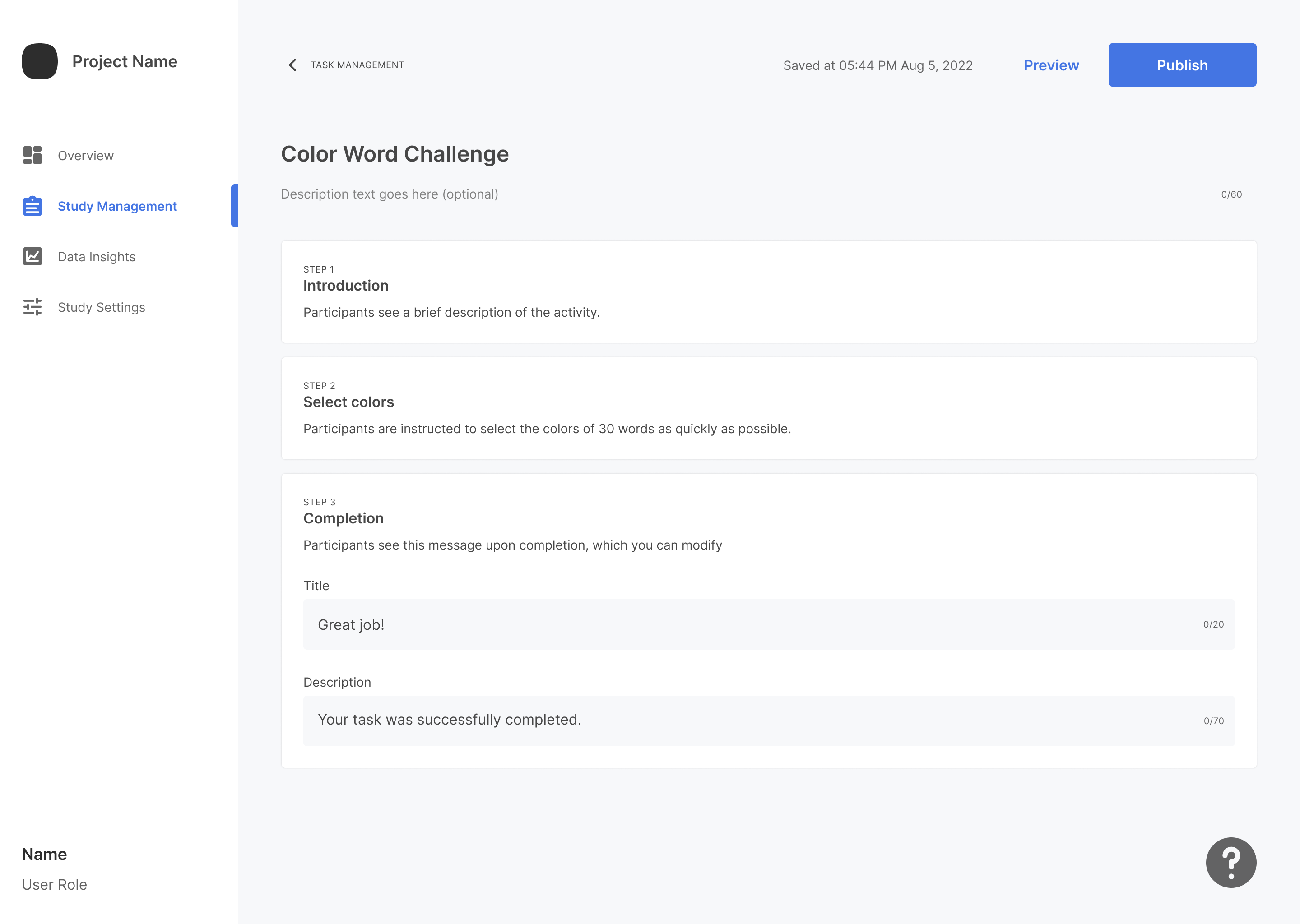
End-user View:
